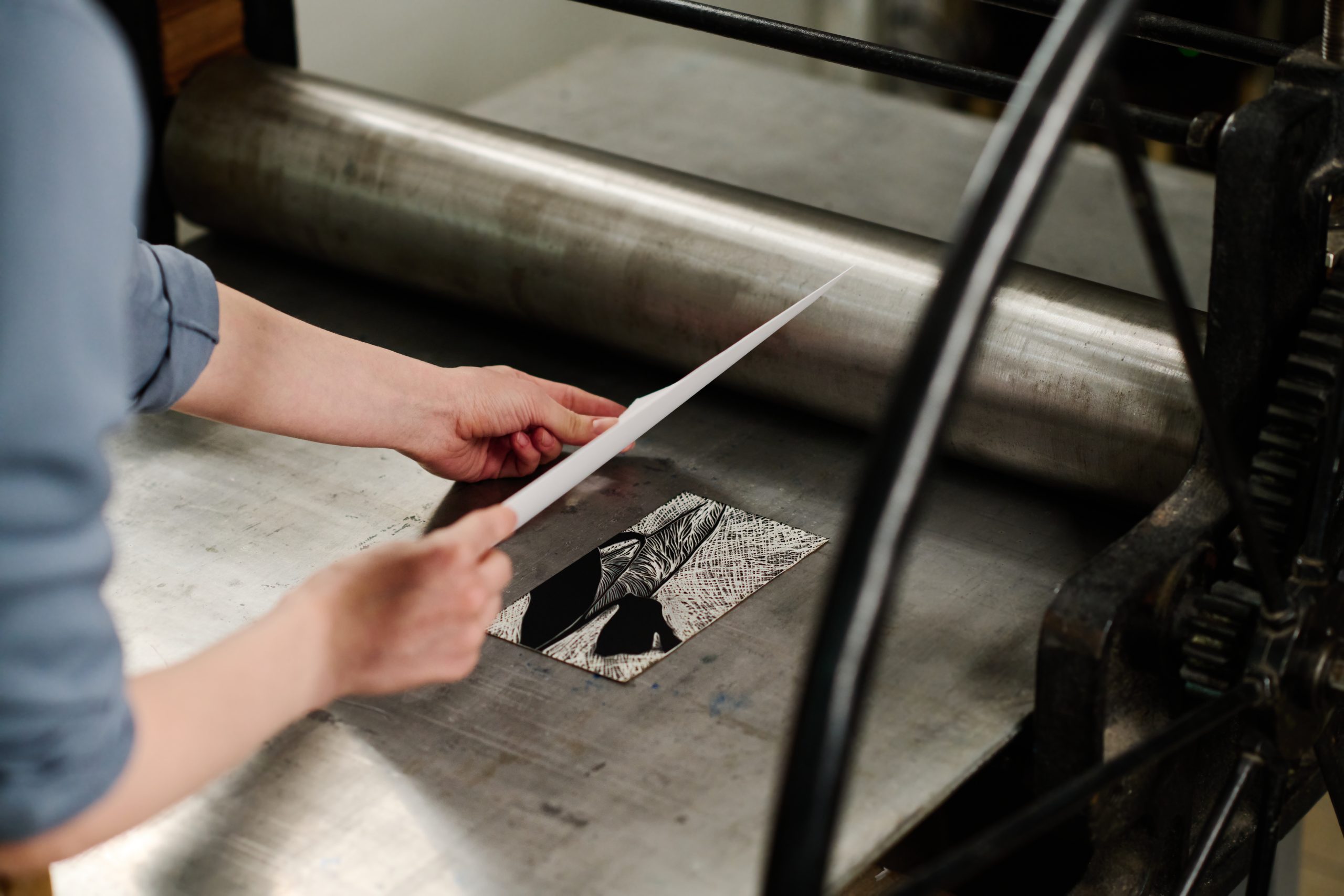When people ask “who invented the printing press?” the name Johannes Gutenberg often comes up—and for good reason. Gutenberg, a goldsmith from Mainz, Germany, is credited with inventing the first mechanical movable-type printing press around 1440. His innovation laid the foundation for a global printing revolution that changed how knowledge was shared across Europe and beyond. This article explores Gutenberg’s press, its components like metal type and oil-based ink, and its legacy for the printing industry today.
Gutenberg and the Birth of the Printing Press
Before Gutenberg, books were laboriously hand-copied or created using woodblock printing, which was time-consuming and expensive. Around 1440, Gutenberg invented the movable type printing system by combining a screw press (inspired by a wine press), durable metal type, and a new oil-based ink. This innovation allowed printers to rearrange and reuse individual letters, significantly reducing the cost and time required to produce books.
Johannes Gutenberg: The Inventor Behind the Press
Gutenberg, born around 1400, used his background as a goldsmith to design precision metal type from a hard metal alloy. His invention was both mechanical and chemical—the printing press itself and the special ink capable of adhering to metal type and paper. In 1455, he completed the Gutenberg Bible, the first major book printed using this technology. This monumental work remains a symbol of the printing revolution.
The Components of Gutenberg’s Press

Movable Metal Type and Oil-Based Ink
The metal type Gutenberg created was durable and reusable, allowing for mass production of text. Unlike earlier inks, which were water-based and ineffective on metal, Gutenberg’s oil-based ink was thick and long-lasting, ideal for clean and sharp impressions on paper. This innovation ensured consistent quality in printed books and documents.
The Printing Process and Early Press Design
The Gutenberg press used a wooden screw mechanism, similar to a wine press, to apply pressure evenly across the type and paper. This process allowed for multiple copies of a page to be printed with remarkable speed and accuracy. Each sheet was manually inked and pressed, marking a significant leap from the slow, error-prone methods of hand-copying manuscripts.
The Printing Revolution and Its Impact
Literacy and Knowledge Dissemination
Gutenberg’s invention sparked a printing revolution that dramatically increased access to books and literacy rates across medieval Europe. By making books more affordable and available, the printing press helped fuel the Renaissance, the Reformation, and the Scientific Revolution. Universities and scholars could now share ideas more widely, accelerating intellectual progress.
From Gutenberg to Modern Printing
The printing press evolved rapidly after Gutenberg’s time. Printers across Europe adapted his invention, spreading the technology to Italy, France, and beyond. The Gutenberg Museum in Mainz today honors his contribution and showcases early printing examples. While the design has modernized, today’s offset and digital presses owe their lineage to Gutenberg’s pioneering model.
Gutenberg’s Challenges and Legacy
The Lawsuit Against Gutenberg
Despite his groundbreaking invention, Gutenberg faced financial difficulties. In 1455, Johann Fust, his financier, sued him, leading to Gutenberg losing control of his printing shop. Fust and Gutenberg’s former assistant Peter Schoeffer continued the business, while Gutenberg’s name faded temporarily from the spotlight. Nevertheless, his role as the inventor of the printing press is now undisputed.
The Enduring Legacy of the Gutenberg Press
Johannes Gutenberg is widely regarded as one of the most influential inventors in human history. The printing process he developed ushered in a new era of mass communication. The Gutenberg Bible remains a treasured artifact, and his press laid the groundwork for institutions like Cambridge University Press and Oxford University Press, which still print books today.
Gutenberg’s Invention Still Shapes Printing Today
So, who invented the printing press? Johann Gutenberg not only invented it but also changed the world with his creation. His movable type system, metal type, and oil-based ink were revolutionary technologies that remain relevant in modern printing. From the first printing press in Mainz to the bustling printing shops of today, the legacy of the Gutenberg press lives on. Visit Graphic Arts 305 in Miami, FL to see how centuries of innovation—from Gutenberg to digital—continue to power high-quality printing for all your needs.





